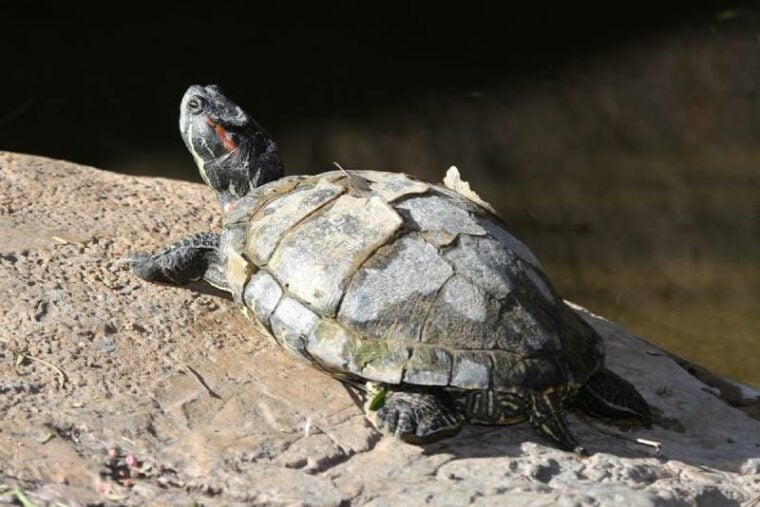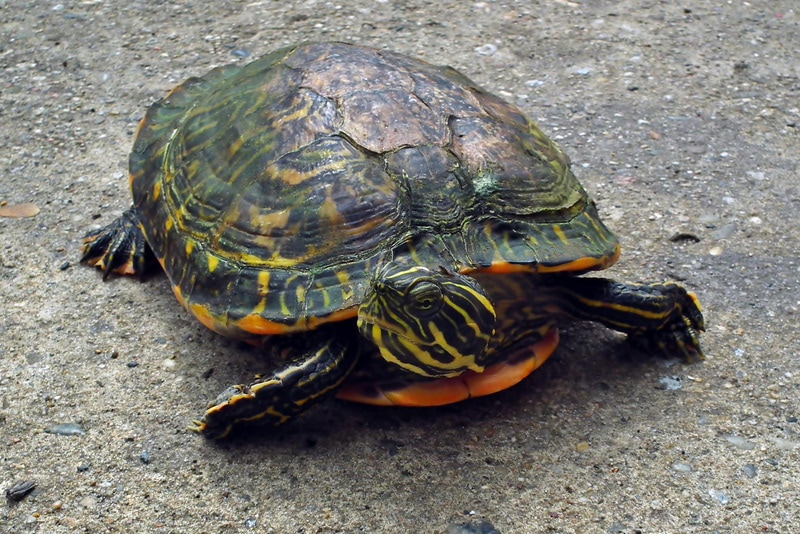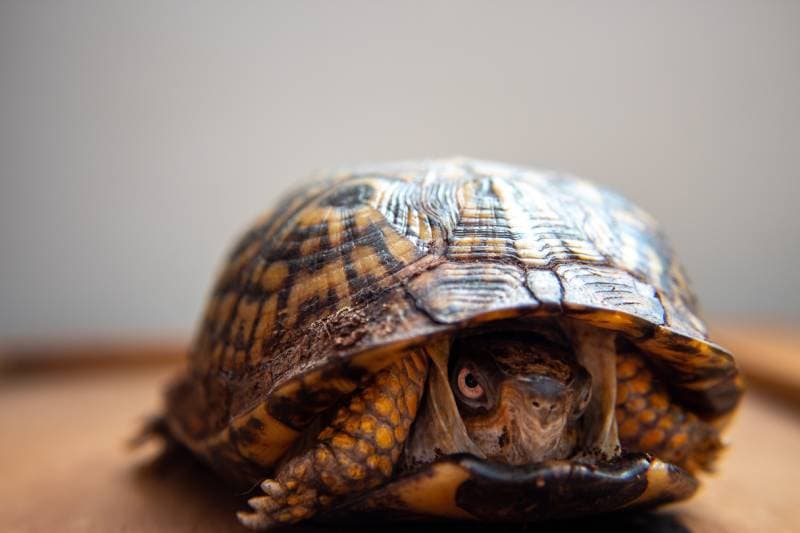
There are about 356 species of turtles, including tortoises and sea turtles. As different as they are from each other in terms of size or color, they all have one thing in common: a shell.
If you’re wondering how the turtle’s shell grows, you should know that like regular bones, it actually grows with the turtle as they age.
In this article, we take a deeper look at how the turtle shell works, what it’s comprised of, and what happens if it’s damaged. So, read on!
What Exactly Are Turtle Shells Made Of?
The main mineral found in a turtle’s shell is calcium phosphate, which is the same mineral that is a substantial part of our own bones and teeth. There are many misconceptions about a turtle’s shell, including that they can wriggle out of it and trade it in for a newer and larger model, kind of like the hermit crab (which does change “homes”).
But nothing could be further from the truth! A turtle’s shell is literally a part of the turtle. It can’t fall off or change just because the turtle has grown bigger. The shell grows with them. It’s made from the turtle’s spine, pelvis, and rib cage. They are the only land animal in which the hip and shoulder bones are found in the ribcage, which is in the shell.
So, since the shell and many of the turtle’s bones are bound together, the turtle’s shell literally grows with them.

The Ribcage
The ribcage is a part of the shell, so turtles need specialized muscles found inside the shell to help them breathe. The shell itself can’t expand and contract to accommodate breathing, so these muscles help turtles get the oxygen that they need.
Does the Turtle’s Shell Shed?
The shell is at one with the turtle, but it does shed something called scutes, which are the different plates that make up the shell.
Scutes are comparable to scales and function as protection in a similar way. These bony external plates can be found on a turtle’s shell, but they are also on the feet of certain birds and the skin of crocodiles. Almost all turtles have scutes, with the exception of soft-shelled and leatherback turtles.
To a certain degree, they can be compared to fingernails, as they are essentially epidermal structures made up of the protein keratin (which also forms our hair and makes up the outer layer of our skin, the epidermis).
As turtles grow, they go through molting, also called ecdysis, which is the shedding of their scutes. This process is an important one because the shell itself can’t expand, and the process of shedding the outer layer of scutes enables the turtle to grow newer and larger scutes. Molting also helps remove fungi or parasites and dirt or debris found on the old scutes.
What Happens If the Shell Is Damaged?

Since the shell grows with the turtle, they can’t just switch to a new one when it’s damaged. A damaged shell can prove fatal if the damage is severe. If it’s relatively minor, the shell can heal on its own after a while, but serious damage will require veterinary care.
Severe damage can expose the turtle to infections or other complications and affect the turtle’s ability to swim, move, or eat, which will also impact their health. Some turtles will need rehabilitation until their shell has healed.
The shell’s outer layer is made up of keratin. The second layer is primarily composed of the bones, and directly under the bones are the turtle’s internal organs. A serious crack that exposes the organs increases the likelihood of infection.
A cracked shell is usually treated with painkillers and antibiotics if needed, and the bridge technique is used. This entails fastening metal or plastic brackets or zip ties to either side of the crack to form a “bridge” to encourage healing.
Unfortunately, if the damage is extensive, including a shattered shell, euthanasia may be the best solution.
Are There Diseases That Affect the Shell?
There are a few diseases that can impact the shell and consequently, the turtle’s health.
Dysecdysis
Dysecdysis is the abnormal shedding of scutes; this is when the scutes are shed too often or don’t shed properly, which can cause infection.
If shedding occurs too frequently, it can leave the turtle’s bones and shell soft and unprotected. This is also a potential sign of a more serious medical condition like kidney failure.

Metabolic Bone Disease
Bone health is essential for turtles because it directly impacts shell health. Metabolic bone disease can occur if the turtle has inadequate calcium intake or not enough sunlight exposure. It can also result from diseases of the thyroid, kidneys, and liver and causes misshapen or soft shell bones.
Shell Rot
Shell rot is ulcers or abscesses that affect the scutes, with defects or pale or dark pink discolorations. This can result from an inadequate filtration system or one that isn’t cleaned enough, as well as infrequent water changes or too low of a temperature.
What Are Turtle Shells For?
Turtle shells are certainly all-purpose! They are homes, shields, shovels, camouflage, and insulation.

Conclusion
Turtle shells are made primarily of calcium phosphate and are essentially bones, which is why they grow along with the turtle.
Molting scutes enable turtles to grow along with their shells. A damaged shell is potentially a big problem, though it depends on how bad the damage is. Fortunately, a vet can often bridge the shell to allow for healing.
Turtle shells are just as unique as the turtles themselves. Be sure to keep an eye on your turtle’s shell. If you see anything worrying, don’t hesitate to bring your pet to your veterinarian.
Featured Image Credit: Four Oaks, Shutterstock








